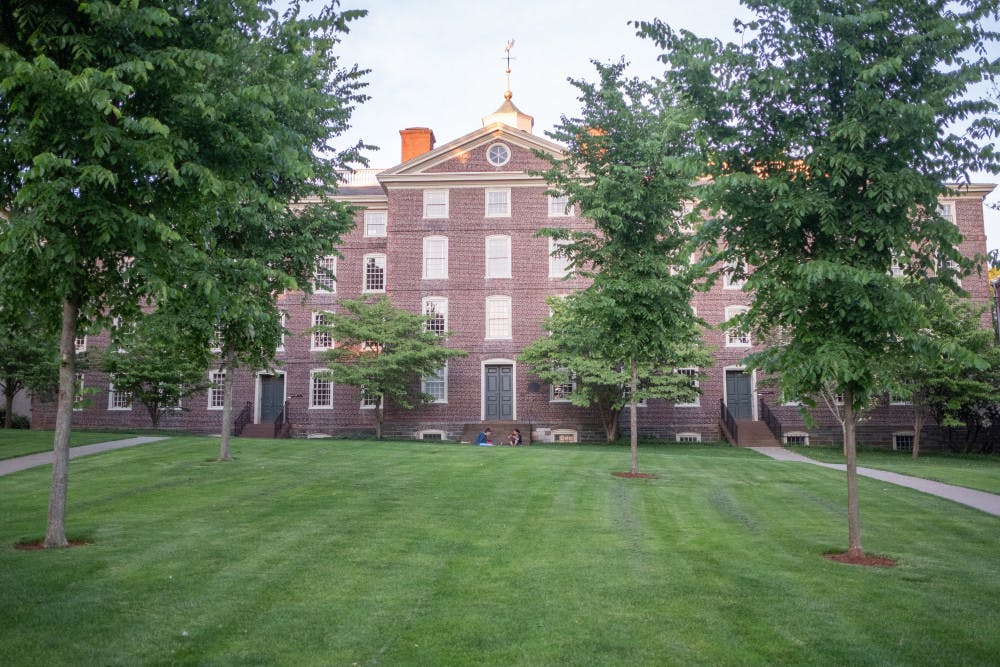Khushi Agrawal ’23, a student from India, had never felt like an outsider in the United States before. That changed when she heard about the new guidelines from the U.S. Immigration and Customs Enforcement agency that meant she might not be able to return to campus in the fall.
In the days following the ICE announcement, Agrawal felt “unwanted.” She noted that the announcement functioned as “a real wake-up call” to how much control the U.S. federal government has over the lives and education of international students.
“It has genuinely made me reconsider my future plans. I was hoping to apply for graduate studies in the U.S. and I am now having to generally reconsider studying in the U.S.,” Agrawal said.
Agrawal and four other international students who spoke with The Herald expressed relief upon hearing about the recent reversal of the ICE rule, which would have prohibited international students with a fully online course load from remaining in the United States.
“I am really grateful, because it will give international students more choice in what they are going to do next semester,” said Kevin Wang '23, who is from Australia.
But the five students stressed that other significant challenges remain for the University's international community. While the students praised the University’s decision to file an amicus brief in support of Harvard and the Massachusetts Institute of Technology's original suit against the rule, students voiced other concerns that they hope the University will address quickly by providing further necessary support.
Students remain stressed about their reentry into the United States, specifically by plane. “We don’t know if it will be possible for us to fly out in the first place,” said Aditi Marshan ’23, who is from India.
As a result of high COVID-19 rates in the U.S., “a lot of international students are unable to enter the States,” said Zoe Coleman '23, who is from South Africa.
“I think half of the international student population is currently in a country facing a travel ban of some sorts,” said Anchita Dasgupta ’21, who is from India. “So it is very likely that the option of returning to campus doesn’t exist” for many international students.
Almost 30 percent of international students plan to study remotely, according to results from the fall 2020 location of study survey.
And as Dasgupta noted, many international students weighing the choice to return to campus are worried about public health conditions. Despite Rhode Island’s relatively low COVID-19 infection numbers, the United States leads the world by a sizable margin in both cases and deaths. Even with its comparatively successful efforts at curbing the virus, the Ocean State alone still has more cases than some countries.
“A lot of us come from countries that are not as bad as the United States COVID-wise,” Dasgupta said. “So it is a serious concern for a lot of us going back.”
Marshan said the reversal of the ICE guidance allows her greater freedom to weigh these health risks and travel obstacles. “Those decisions were made a lot easier when there wasn’t a concern for our visa status.”
But this guidance was not reversed for international first-year students, who will not be allowed to enter the U.S. in the fall if they take all of their courses online. This poses a particular problem for international first-year students entering universities which plan to offer only online classes next semester, such as Harvard and the California State University campuses.
Brown, which plans to implement a hybrid system of online learning and in-person classes next semester, “offers enough flexibility that first-year international students (assuming other obstacles to visa issuance and travel restrictions do not stand in the way) could take at least one in-person course and reside on campus,” University spokesperson Brian Clark wrote in an email to The Herald.
International first-years could be somewhat limited in their course choices in comparison to their U.S. resident counterparts or already matriculated international students. In order to return to campus they will have to take at least one in-person class, which may be less ideal for students who were looking to take only large lecture classes their first semester.
Nevertheless, Tanya Deshpande ’24, who is currently residing in Hong Kong, is not worried. While she admits that the situation for international first-year students is “ambiguous,” she has been pleased with the University’s response so far. “I know Brown will do the most (it) can.”
There is still much work to be done for a successful semester come fall, according to the students. Specifically, international students hope the University will address issues surrounding discussion-based classes scheduled for the convenience of Eastern Standard Time.
The five students also agreed that while they appreciated the University’s original response to the ICE guidance, they wished the administration had communicated more clearly with the community. “Generally (the University) could have done a better job being clearer about what the guidelines were and what they were doing,” Dasgupta said.
“We did not know they were going ahead with the amicus brief until very late. We were not a part of a lot of these decisions, so oftentimes it felt like our concerns weren’t being heard.”
The Office of International Student and Scholar Services did not respond to multiple requests for comment.
Ultimately, the most unsettling outcome of the ICE guidance was the message it sent to international students, Agrawal said.
Coleman was “very excited” to come to school in America, but has been “terrified” watching recent developments in the country. “I will definitely not be going to grad school in the states. I am going to get my degree and run for the hills.”

ADVERTISEMENT




